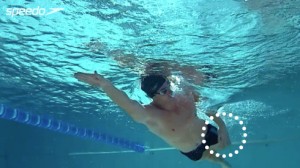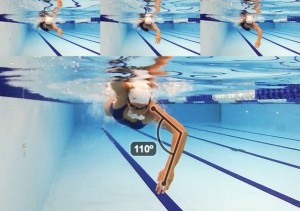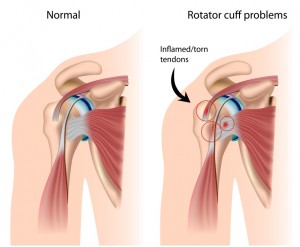SWIMMERS’ SHOULDER
Swimmers’ shoulder is a general term used to describe a wide range of shoulder conditions that are frequently experienced by swimmers. Due to the dynamic shoulder movements associated with swimming, the condition is usually a result of overuse or repetition of the shoulder muscles. Symptoms may include pain or tightness in the shoulder, neck or shoulder blade region, with possible radiation to the upper arm. Being an overuse injury, the condition gradually worsens and can be an extremely frustrating rehabilitation for a keen swimmer.
 The shoulder joint is a relatively unstable “ball and socket” joint, that achieves stability from the surrounding rim of cartilage, capsule, ligaments and muscles. There a 4 key muscles that surround the shoulder and assist in maintaining its neutral position in the socket. These muscles are known as the rotator cuff muscles and if they are over worked or placed under excessive strain, inflammation and injury will occur. This frequently leads to a condition known as impingement, whereby the rotator cuff tendons and/or bursa are “squashed” under the collar bone. Pain is usually felt when the arm is lifted away from the body or when reaching behind the back, both of which are frequently performed when swimming.
The shoulder joint is a relatively unstable “ball and socket” joint, that achieves stability from the surrounding rim of cartilage, capsule, ligaments and muscles. There a 4 key muscles that surround the shoulder and assist in maintaining its neutral position in the socket. These muscles are known as the rotator cuff muscles and if they are over worked or placed under excessive strain, inflammation and injury will occur. This frequently leads to a condition known as impingement, whereby the rotator cuff tendons and/or bursa are “squashed” under the collar bone. Pain is usually felt when the arm is lifted away from the body or when reaching behind the back, both of which are frequently performed when swimming.
Swimmers’ shoulder can be caused by physical limitations in the individual swimmer, poor swimming technique or factors relating to the training regime. Physical limitations may include excessive muscle tightness (shoulder, neck or trunk), reduced shoulder/hip range of motion or reduced trunk rotation. These restrictions will lead to gradual aggravation of the associated shoulder muscles, along with resulting in a poor swimming technique.
Technique faults may include lack of body rotation, crossing the midline, poor hand placement in the water (thumb first) or dropped elbow during the “catch and pull” phase. All of these factors put considerable strain through the shoulder joint and muscles and can lead to an overuse injury. Swimming long distances with inadequate warm-up and recovery, will also contribute to shoulder injuries. Training programmes should cater for an individual’s level of fitness and ensure the training volume is gradually progressed.
Treatment of swimmers’ shoulder involves a number of treatment strategies to achieve a full recovery. Initially, physiotherapy treatment, medication and ice are required to reduce inflammation in the structures around the shoulder. Taping may also be used by your physiotherapists to support the shoulder during the inflammatory stage.
Rehabilitation will  then focus on restoring range of motion in the shoulder, neck and upper back, along with reducing muscle tightness in the surrounding muscle groups. This is achieved through joint mobilisation, deep tissue massage and acupuncture. Once range of motion and correct posture has been restored, the rotator cuff and scapula stabilising muscles need strengthening to coordinate normal shoulder function. A resistance band is often used to strengthen these muscles by reproducing movements performed during the swimming technique. Upon returning to the pool, it is essential to address any technique impairments to minimise the chance of aggravation. Focus on correct hand entry (finger tips first), not crossing the midline, high elbow during the “pull and catch” phase and adequate body roll. Ongoing stretching and strengthening exercises, along with maintaining a good posture will be required to maintain correct shoulder function throughout your training regime.
then focus on restoring range of motion in the shoulder, neck and upper back, along with reducing muscle tightness in the surrounding muscle groups. This is achieved through joint mobilisation, deep tissue massage and acupuncture. Once range of motion and correct posture has been restored, the rotator cuff and scapula stabilising muscles need strengthening to coordinate normal shoulder function. A resistance band is often used to strengthen these muscles by reproducing movements performed during the swimming technique. Upon returning to the pool, it is essential to address any technique impairments to minimise the chance of aggravation. Focus on correct hand entry (finger tips first), not crossing the midline, high elbow during the “pull and catch” phase and adequate body roll. Ongoing stretching and strengthening exercises, along with maintaining a good posture will be required to maintain correct shoulder function throughout your training regime.
Your physiotherapist will be able to prescribe a specific strength and flexibility program for your shoulder pain, which will also improve your swimming performance and technique.

